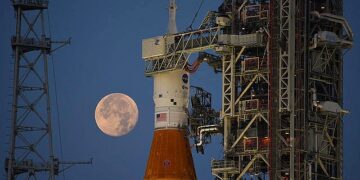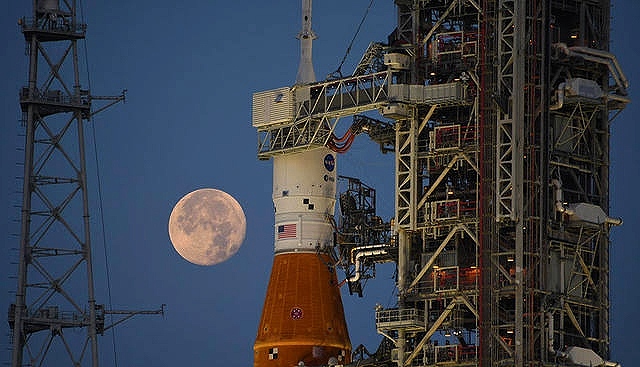By John Ikani
NASA was forced to abort its highly anticipated Artemis 1 mission Monday after a series of problems with the rocket known as Space Launch System (SLS) and the fueling procedures could not be quickly resolved.
Atop the rocket sits Orion, the spacecraft that will eventually take astronauts to the moon.
A leaking engine and crack in the core stage were identified around 7:30am ET and the launch was officially scrubbed at 8:35am ET.
The development made hundreds of thousands of people who gathered at the Kennedy space station in Florida to head home without seeing the first stage of the epic moon mission kick off.
It was equally disappointing for the hundreds of engineers and technicians who have labored for months to ready the giant moon rocket for launch. But it was not to be.
The next available launch window is on Friday, September 2. But NASA hasn’t yet confirmed whether it will make another attempt on that day.
“This is just part of the space business, and it’s part of, particularly, a test flight,” NASA Administrator Bill Nelson said.
“We are stressing and testing this rocket and the spacecraft in ways you would never do it with a crew on board. That’s the purpose of a test flight.”
The SLS rocket is the most powerful ever built by NASA, standing 322 feet tall, weighing 5.7 million pounds when loaded with propellant and generating 8.8 million pounds of thrust at liftoff, 15 percent more than NASA’s legendary Saturn 5, the current record holder.
The Artemis 1 test flight is intended to verify the rocket’s ability to propel Orion capsules into Earth orbit and then onto the moon. Engineers also will test the crew ship’s myriad systems in deep space and make sure its heat shield can protect returning astronauts from the 5,000-degree heat of re-entry.
NASA plans to follow the uncrewed Artemis 1 mission by launching four astronauts on a looping around-the-moon flight in 2024, setting the stage for the first astronaut landing in nearly 50 years when the first woman and the next man step onto the surface in the 2025-26 timeframe.
But first, NASA must prove the rocket and capsule will work as planned and that begins with the uncrewed Artemis 1 test flight.




































